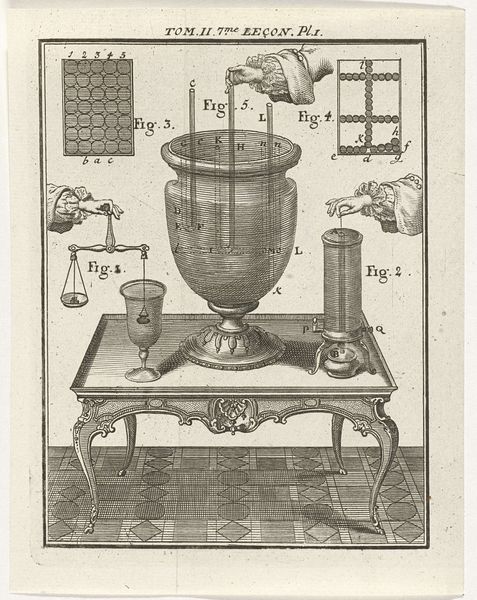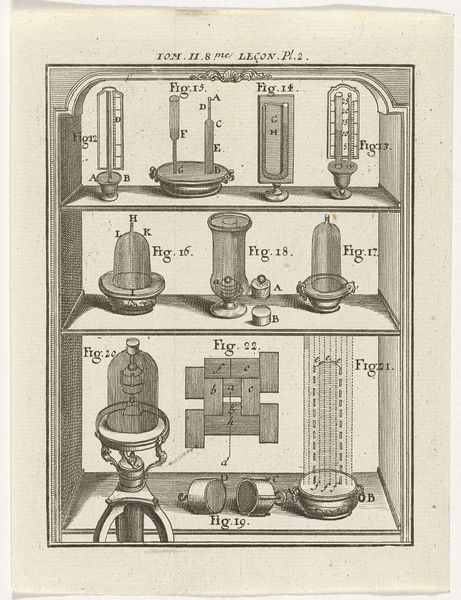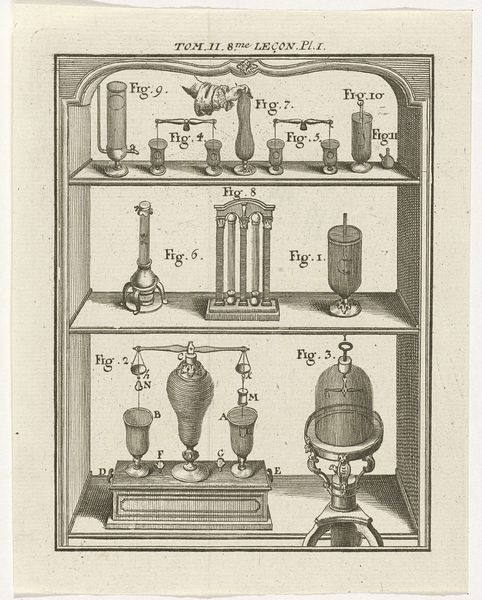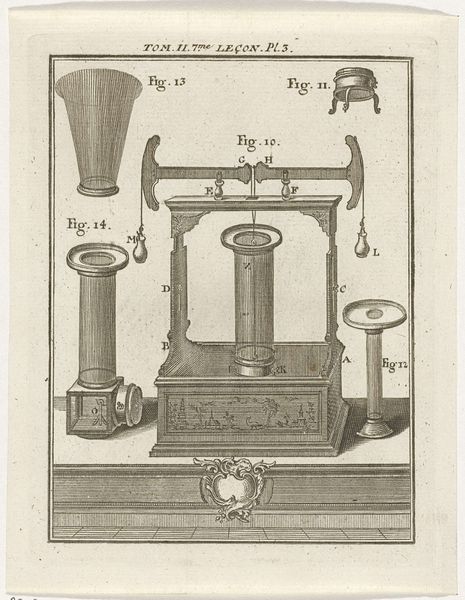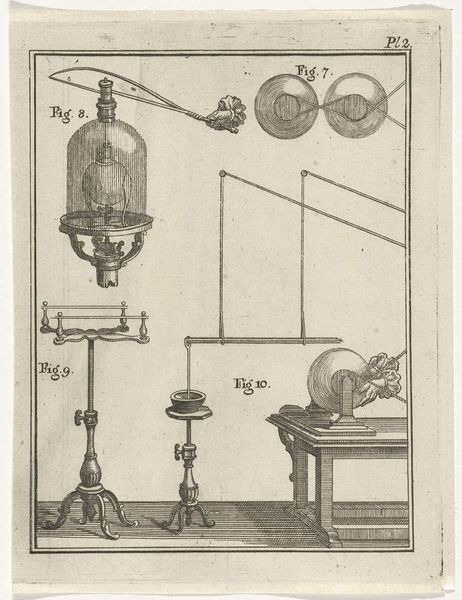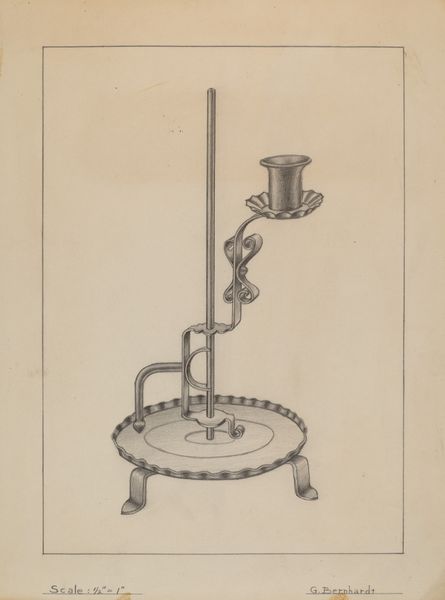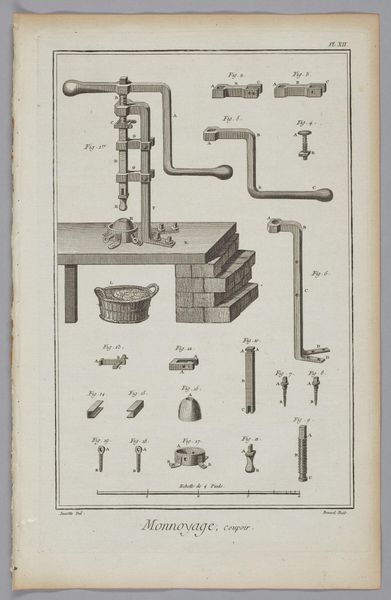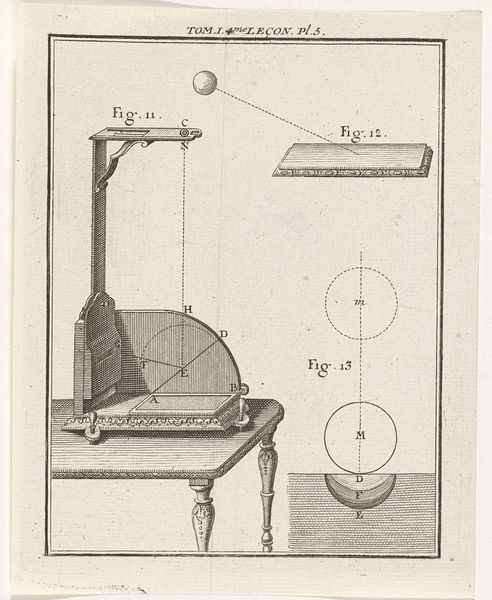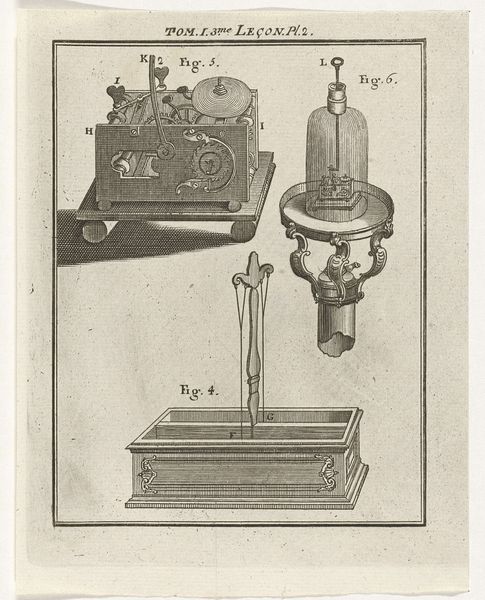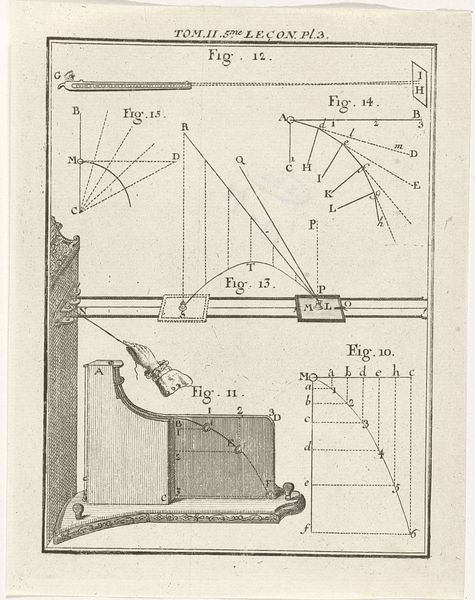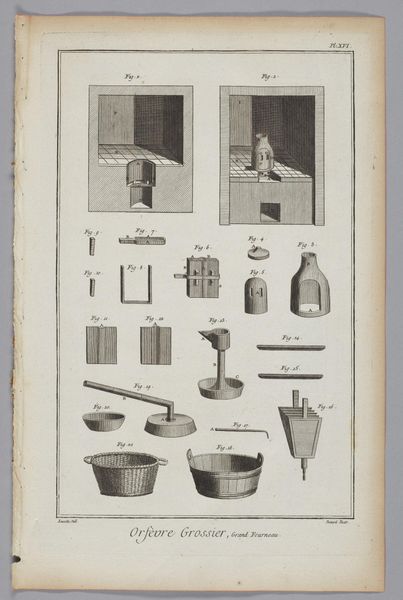
print, engraving
# print
#
old engraving style
#
geometric
#
line
#
history-painting
#
engraving
Dimensions: height 162 mm, width 123 mm
Copyright: Rijks Museum: Open Domain
Curator: What a fascinating image! This engraving, titled "Natuurkundige instrumenten en modellen" or "Scientific instruments and models", comes to us from 1759 and is housed here at the Rijksmuseum. The engraver is Nicolaas van Frankendaal. Editor: Immediately, I'm struck by the stark, almost sterile clarity. The monochromatic lines delineate complex forms, imbuing them with an air of detached, objective study. It feels very much a product of its time, doesn't it? Curator: Absolutely. The piece reveals much about the cultural reverence for empirical observation during the Enlightenment. We see symbols of the natural world, like the water pouring into the basin, juxtaposed against the perfect geometry of the circles and lines. Water, throughout art history, carries diverse meanings—purity, transformation, the subconscious… Editor: True, and here, the presence of water suggests a connection to classical notions of the elements, or perhaps alludes to specific hydraulic principles being examined. What do you make of the numerical and alphabetical labels superimposed onto the instruments? Curator: Those alphanumeric notations function as a kind of key, linking visual representations to specific textual explanations within the book for which this engraving served as an illustration. It’s a semiotic system within the image itself, isn't it? Editor: Yes, almost a visual taxonomy! The piece embodies a quest for order and understanding, reflective of Enlightenment values and the period’s fervent attempt to systemize knowledge. Even the crisp, almost mathematical lines are meant to project precision. Curator: I agree completely. Beyond the scientific diagrams, one could even read the plate as an allegory, water the origin of things, and human observation attempting to understand and organize it, echoing centuries of humanity struggling to understand their place in the grand scheme. Editor: Looking closely has revealed so many fascinating insights, especially thinking about how symbols resonate through centuries. Curator: Indeed. It really provides food for thought about how much has, and hasn't, changed in our human desire for understanding.
Comments
No comments
Be the first to comment and join the conversation on the ultimate creative platform.

